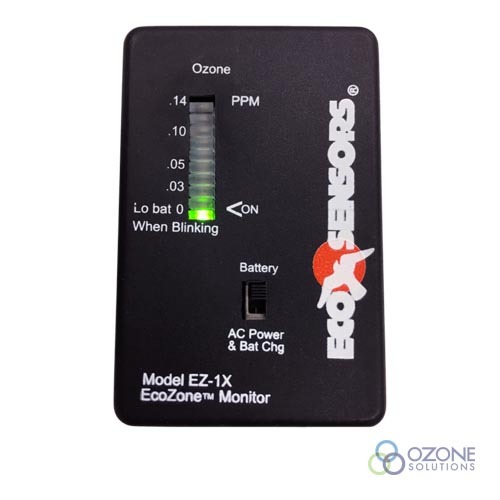Ozone Exposure Testing
Information provided by EcoSensors.

Ozone concentrations can vary greatly at various locations and the concentrations are often highest in unexpected places.
Key points to consider are:
- Ozone is much heavier than air and tends to sink to lower levels.
- Ozone has a low vapor pressure and so it does not try to fill the room uniformly. It tends to stay where it is.
- Ozone tends to cling to rough surfaces such as fabrics and breaks down (converts back to oxygen) when passing through restricted and obstructed passageways.
- Ozone reverts back to oxygen with a "half life" (time to go to half of its original concentration) typically of 10-30 minutes.
- Ozone can be confused by instrumentation with other oxidizing gases such as chlorine compounds, acid fumes and oxides of nitrogen (NOx). Strong "reducing" gases, such as vapors of alcohol and solvents, can reduce the apparent concentration of ozone.
- Ozone has a sweet smell, but the odor threshold varies widely by the person and by ambient conditions. Therefore "smell" is not a reliable test for the presence or concentration of ozone.
The important measurement is:
What is the ozone concentration at the breathing level where room occupants will be?
For ozone introduced via HVAC systems with good room air circulation, the alternate point of measurement is near the entrance to the return air duct.

